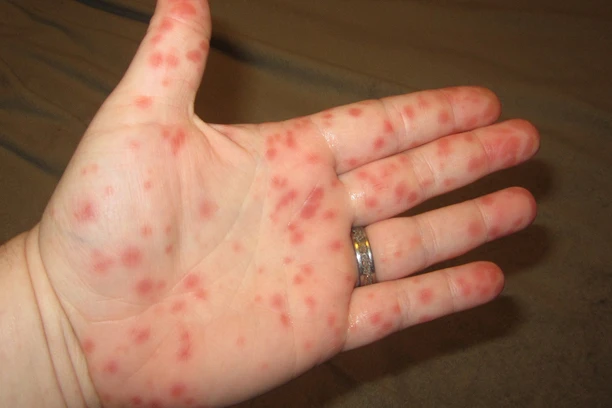What is Tomato Flu?
Tomato flu or tomato fever, a rare viral infection that causes skin irritation, dehydration, and rashes, most frequently affects kids under the age of five. It could be a complication from childhood dengue or chikungunya fever rather than a brand-new viral infection. According to certain studies, viral hand, foot, and mouth illness, which primarily affects children between the ages of one and five and immunocompromised adults, may have a novel variety.
The appearance of red, uncomfortable blisters that gradually grow in size until they resemble tomatoes gave the flu its name.
Symptoms of Tomato Flu or Tomato Fever
Initial tomato flu symptoms, such as a high temperature, rashes, and excruciating joint pain, are similar to those of dengue and chikungunya. All over the body, rashes and blisters that resemble those caused by the monkeypox virus appear, irritating the skin. Additional signs include:
- Fatigue
- Cramps
- Nausea
- Vomiting
- Diarrhoea
- Fever
- Dehydration
- Swelling of joints
- Body aches
Cause of Tomato Flu Outbreak in India
The specific reason for the outbreak of the tomato virus is still a mystery. To learn more about the virus that causes tomato fever, scientists and medical professionals are conducting additional research.
The term “tomato flu” has a medical name: “Hand Foot Mouth disease.” It is brought on by enteroviruses, most frequently the coxsackievirus. Typically, it affects kids under the age of five. The highly contagious illness known as tomato flu can spread by air and close touch. Therefore, practising seclusion is advised. This virus can be spread to young children by contact with unclean surfaces, diaper use, and direct object ingestion.
Treatment of Tomato Flu
According to the Lancet report, tomato flu is a self-limiting illness for which no specific medication is available. The treatment method for tomato fever is identical to that for dengue or chikungunya because the symptoms are the same. Tomato flu is treated with seclusion, relaxation, lots of drinks, and a hot water sponge to soothe itching and rashes. Additionally, paracetamol supportive therapy for fever and body aches as well as other symptomatic therapies are needed.
To yet, there are no antiviral medications or vaccines that can be used to treat or prevent tomato flu. To better comprehend the need for prospective remedies, more study and investigation are required.
Prevention Techniques for Tomato Flu
The old saying “Prevention is the best cure” is true when it comes to tomato flu. The most effective strategy to protect our kids from tomato fever is to take preventative measures because more research is required to understand the reasons and develop a cure.
Following are some preventive measures to avoid getting this flu:
- Keep your distance from the infected person.
- Your kids should learn about this illness and how it affects the body.
- Teach them the symptoms of tomato fever so they can keep a safe distance from anyone exhibiting or experiencing those symptoms.
- Inform them not to shake hands with, play with, or embrace any kids exhibiting tomato fever symptoms.
- Encourage kids to practise good hygiene and to quit doing things like sucking their thumbs or picking their noses that involve bodily fluids.
- In order to prevent the disease from spreading, advise them to cover their mouth and nose with a handkerchief when sneezing or coughing.
- Stop the infected child from giving non-infected kids his or her toys, clothes, food, or other belongings.
- When someone touches a blister, remind them not to massage or scrape at it and to wash their hands afterwards.
- To keep them hydrated, encourage your kids to drink lots of water, milk, juice, etc.
- If your child exhibits tomato fever symptoms, isolate them.
- Clean and sanitise your children’s toys, clothes, utensils, and other belongings on a regular basis.
- Warm water is advised while bathing or cleaning your child’s skin.
- Include foods that are high in nutrients and immune boosters in your child’s diet.

